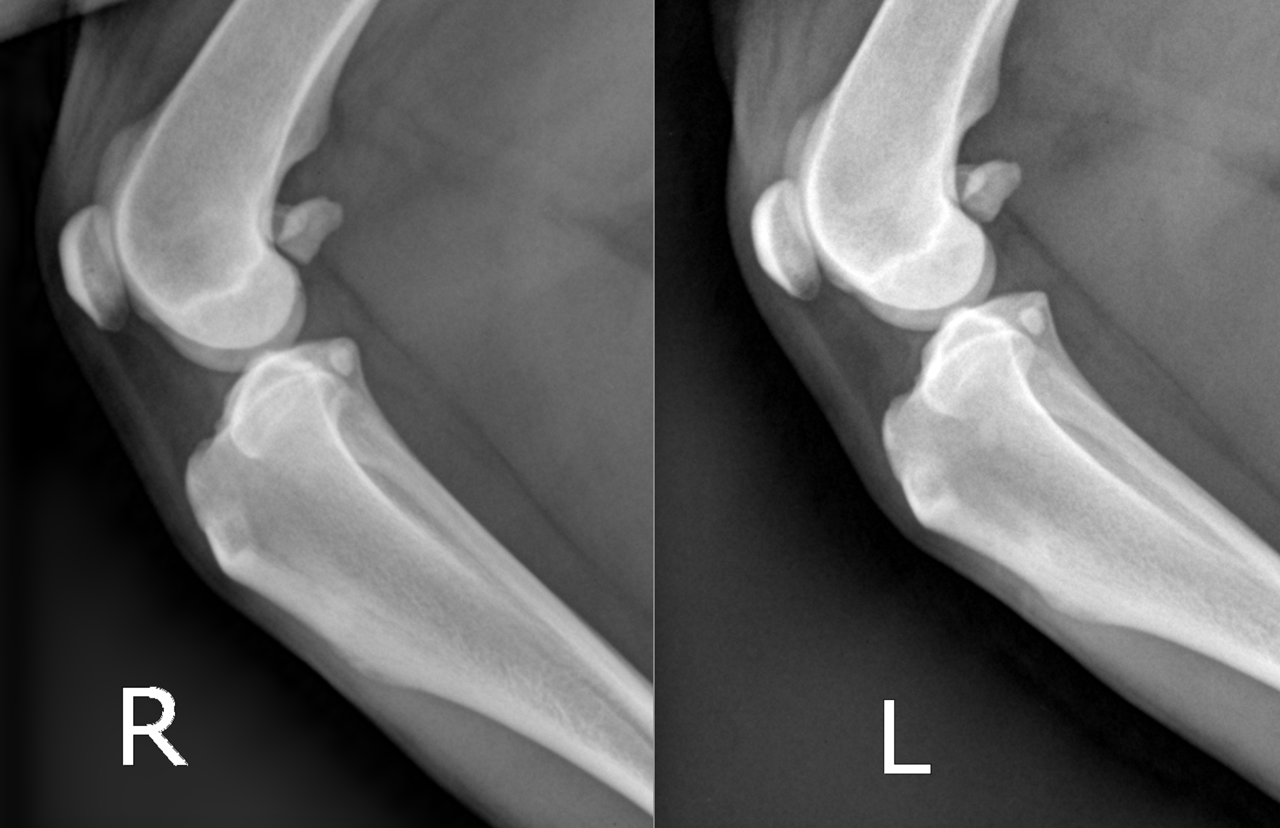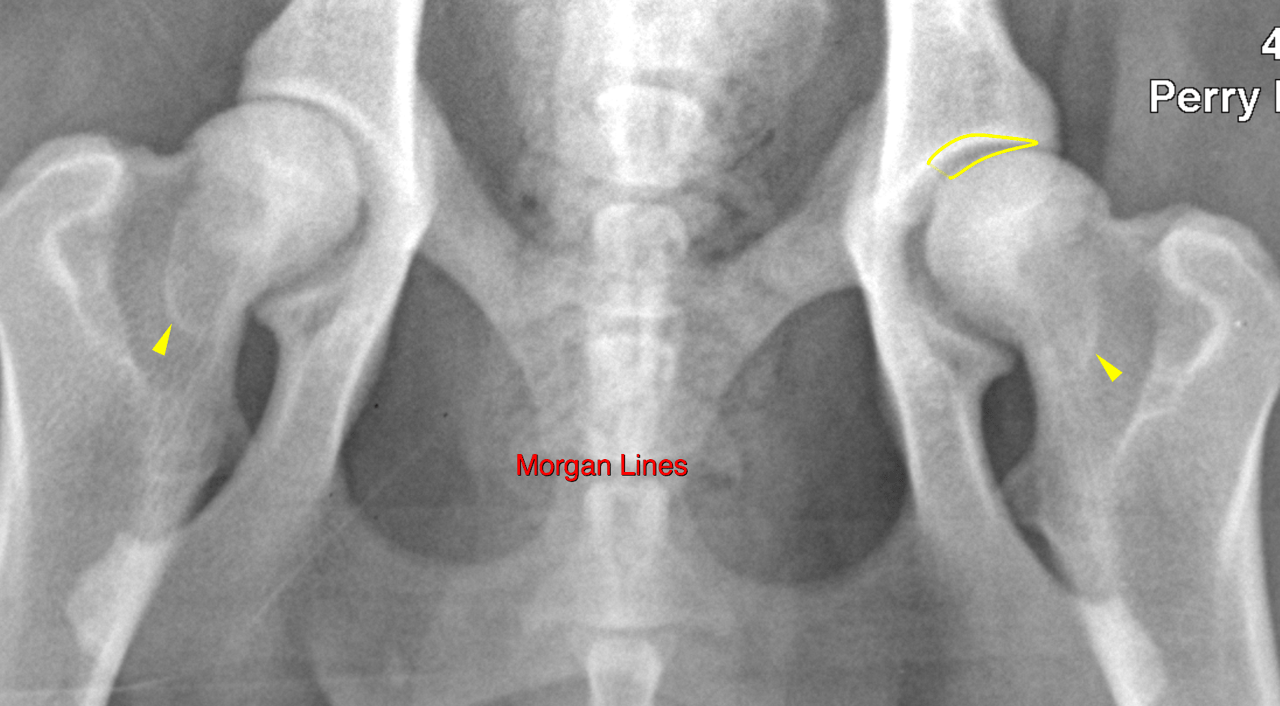This 5 year old MN Akita dog presented with a 2 month history of left hind lameness. Sedated films done at that time showed hip dysplasia with subluxation of left hip. He stands with hind legs base narrow, hocks are together at home. No trauma known.
Physical Exam: base narrow stance in both hind legs. Both stifles thickened medially. No spinal pain. BCS 6/9 Can square sit easily. Under sedation today, CTT and CD esp flexion LH more than RH. No subluxation or ortolani sign appreciated.
CBC/ Chem/UA: wnl.
This 5 year old MN Akita dog presented with a 2 month history of left hind lameness. Sedated films done at that time showed hip dysplasia with subluxation of left hip. He stands with hind legs base narrow, hocks are together at home. No trauma known.
Physical Exam: base narrow stance in both hind legs. Both stifles thickened medially. No spinal pain. BCS 6/9 Can square sit easily. Under sedation today, CTT and CD esp flexion LH more than RH. No subluxation or ortolani sign appreciated.
CBC/ Chem/UA: wnl.
Reason for Ultrasound Exam: Eval for stifle disease vs hip dysplasia

